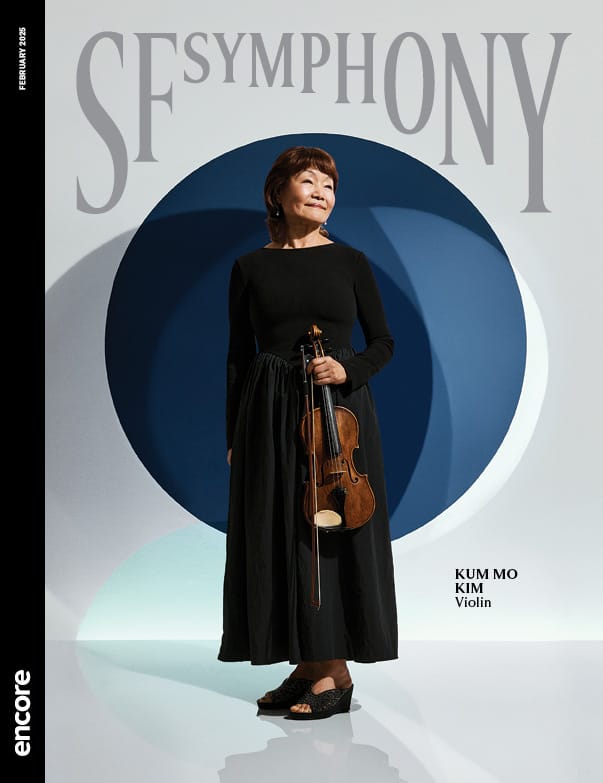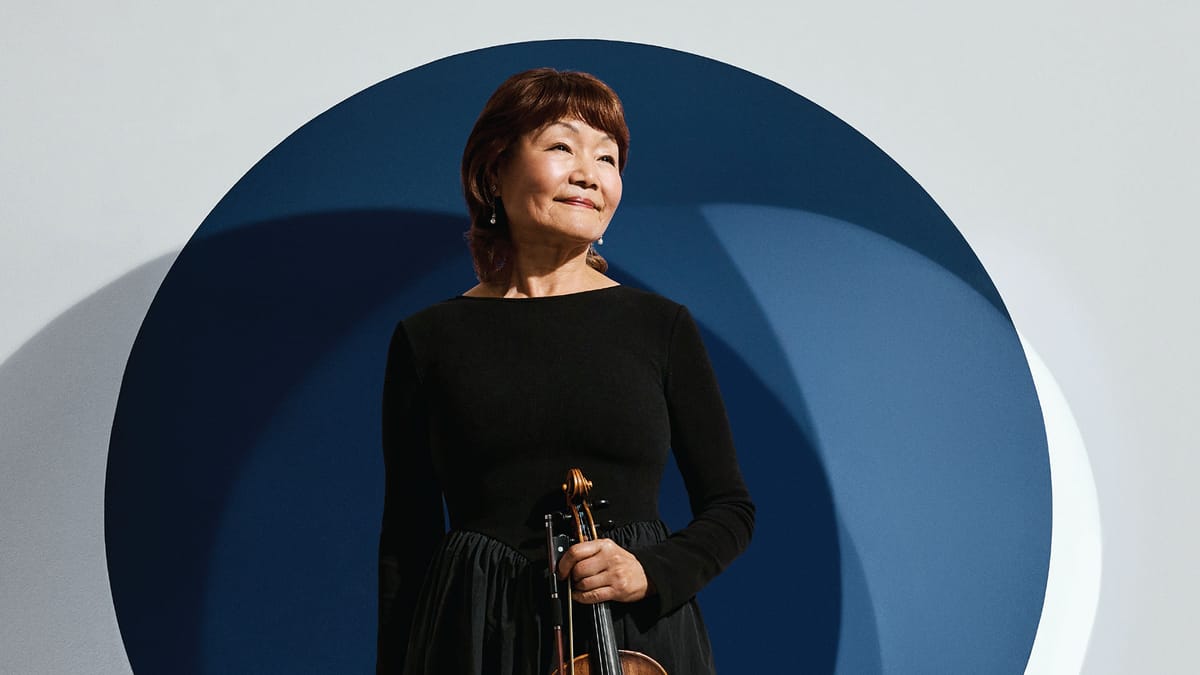In This Program
- Welcome
- A Visionary at the Keyboard
- Music With Friends
- Community Connections
- Meet the Musicians
- Print Edition
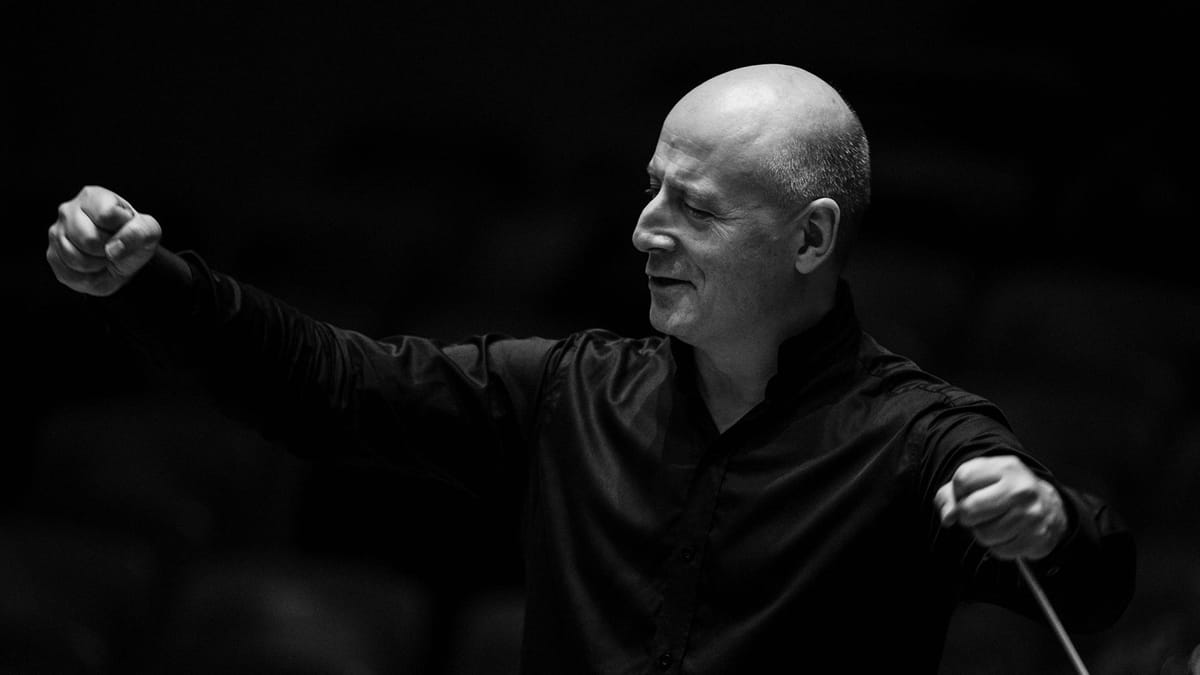
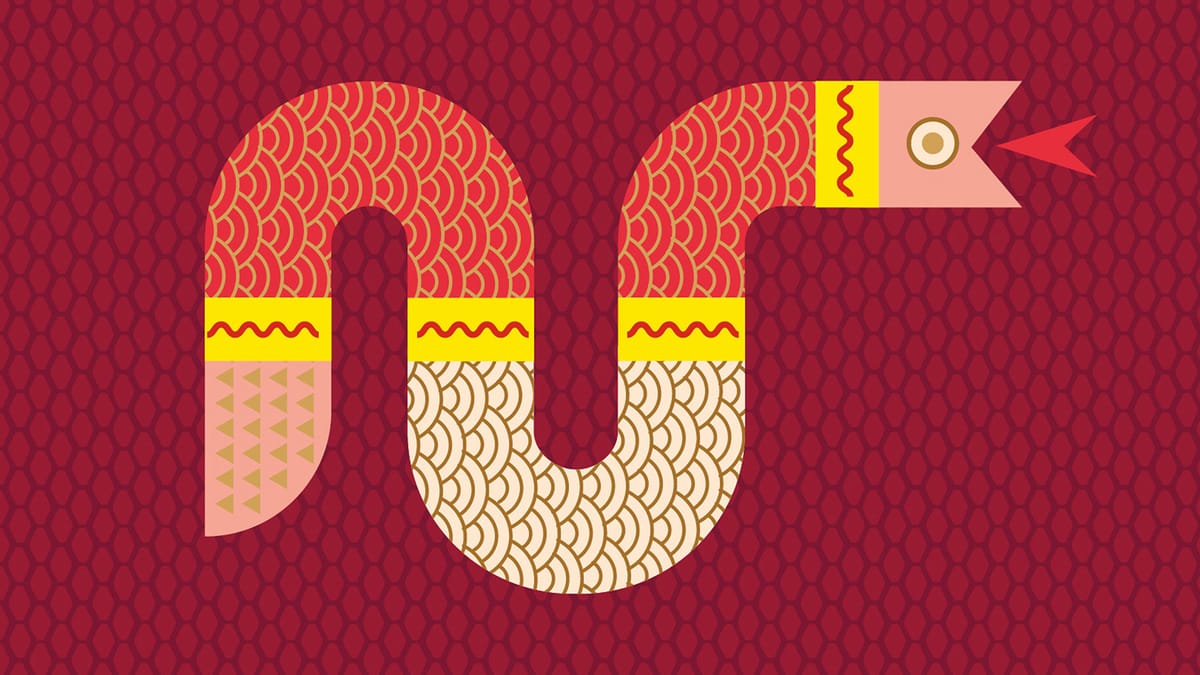
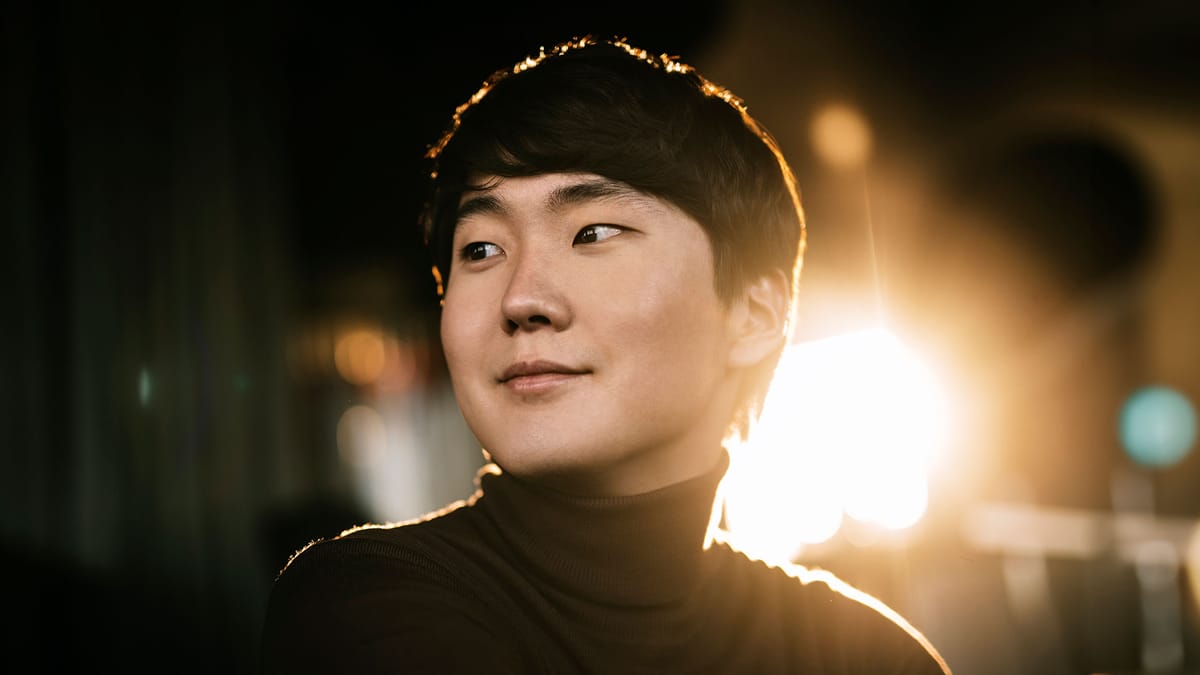
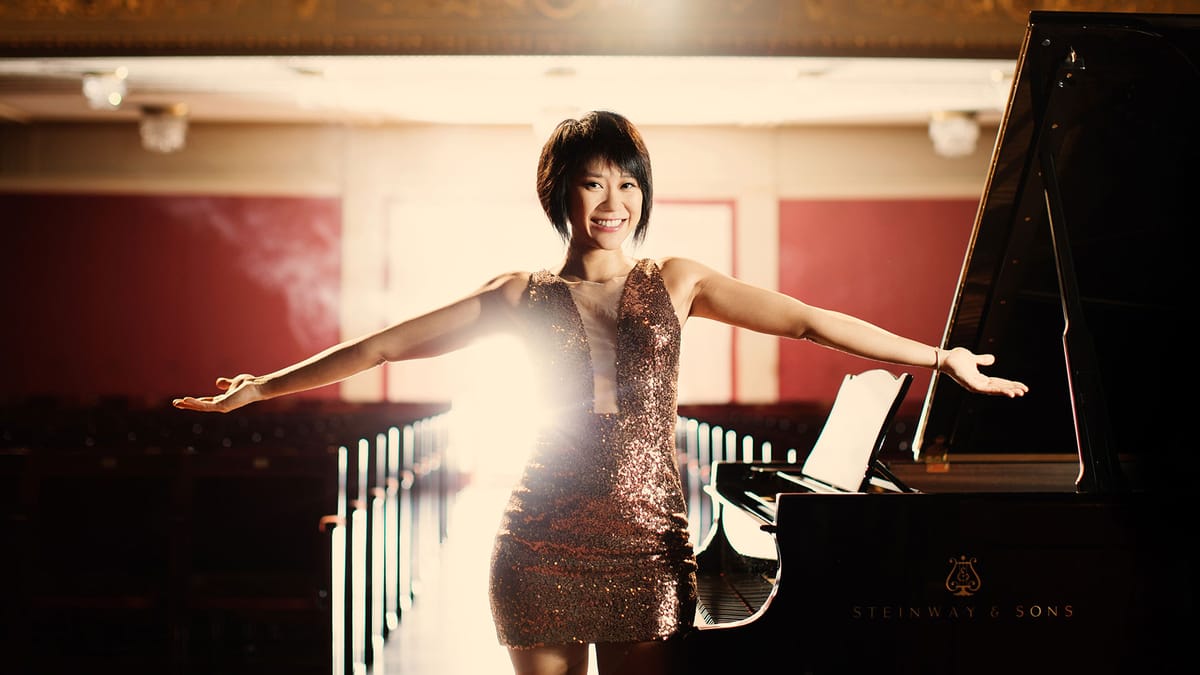
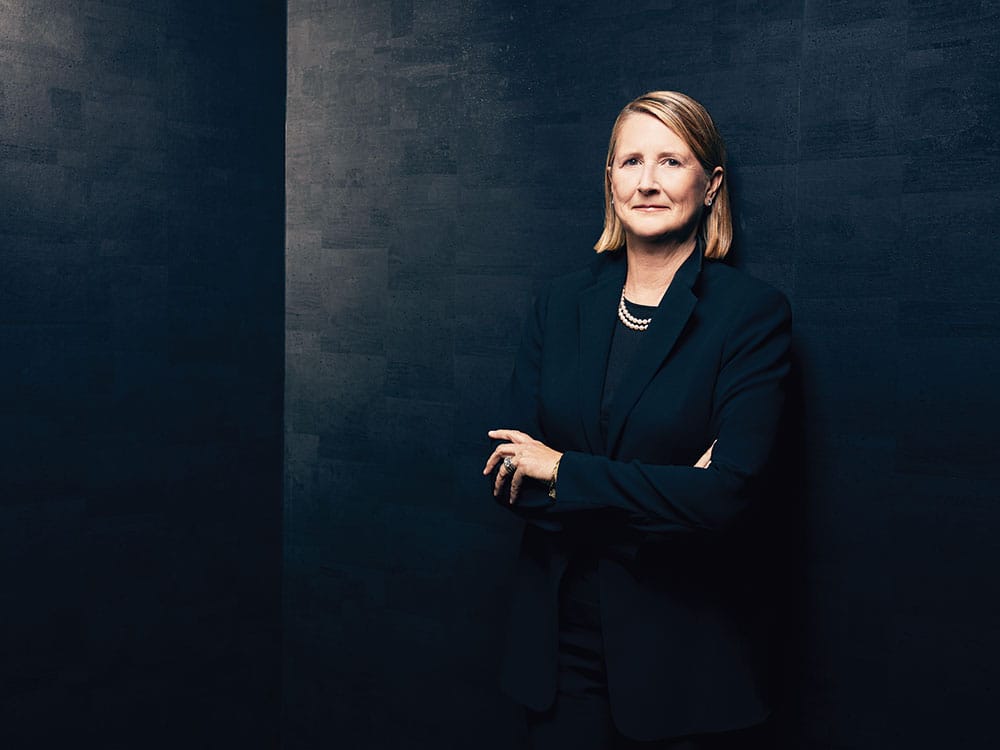
Welcome
It is a pleasure to welcome you to Davies Symphony Hall as we usher in the Year of the Serpent! February brings one of my favorite traditions—our annual Lunar New Year concert. Now in its 25th year, this special event continues to showcase and celebrate the Bay Area’s rich diversity through traditional and contemporary musical treasures from East and West.
Over the years, this concert has played a vital role in introducing remarkable new artists—including Yuja Wang, Ray Chen, and Conrad Tao—and works to our audience. This year, we carry on that tradition with the world premiere of a new work by Shuying Li, commissioned by the San Francisco Symphony.
At the center of this celebration is the exceptional artistry of our San Francisco Symphony musicians. This year, you’ll hear Amos Yang, our assistant principal cello, in a special cello and orchestra arrangement of the beloved The Butterfly Lovers Concerto. Amos is just one of several Symphony musicians who have been featured as soloists in Lunar New Year concerts over the years.
Presenting an event of this scale, year after year, is no small feat. The enduring success of Lunar New Year at the San Francisco Symphony is a testament to the dedication and support of so many—our event chairs, Lunar New Year committees, Symphony volunteers, and generous donors. This year, we honor two individuals who have been instrumental to this tradition’s longevity: Margaret Liu Collins, a San Francisco Symphony Life Governor whose visionary leadership helped establish and shape this event, and Symphony Governor John Chen, an early and enduring sponsor of Lunar New Year at the San Francisco Symphony.
For more than two decades, our annual Lunar New Year celebrations have connected us to music, to one another, and to the community we share. For many, this concert has become an essential part of their holiday traditions—a joyful way to welcome the new year with family and friends.
On behalf of the San Francisco Symphony family, I wish you health, happiness, and prosperity in the coming year.
Priscilla B. Geeslin
Chair, San Francisco Symphony
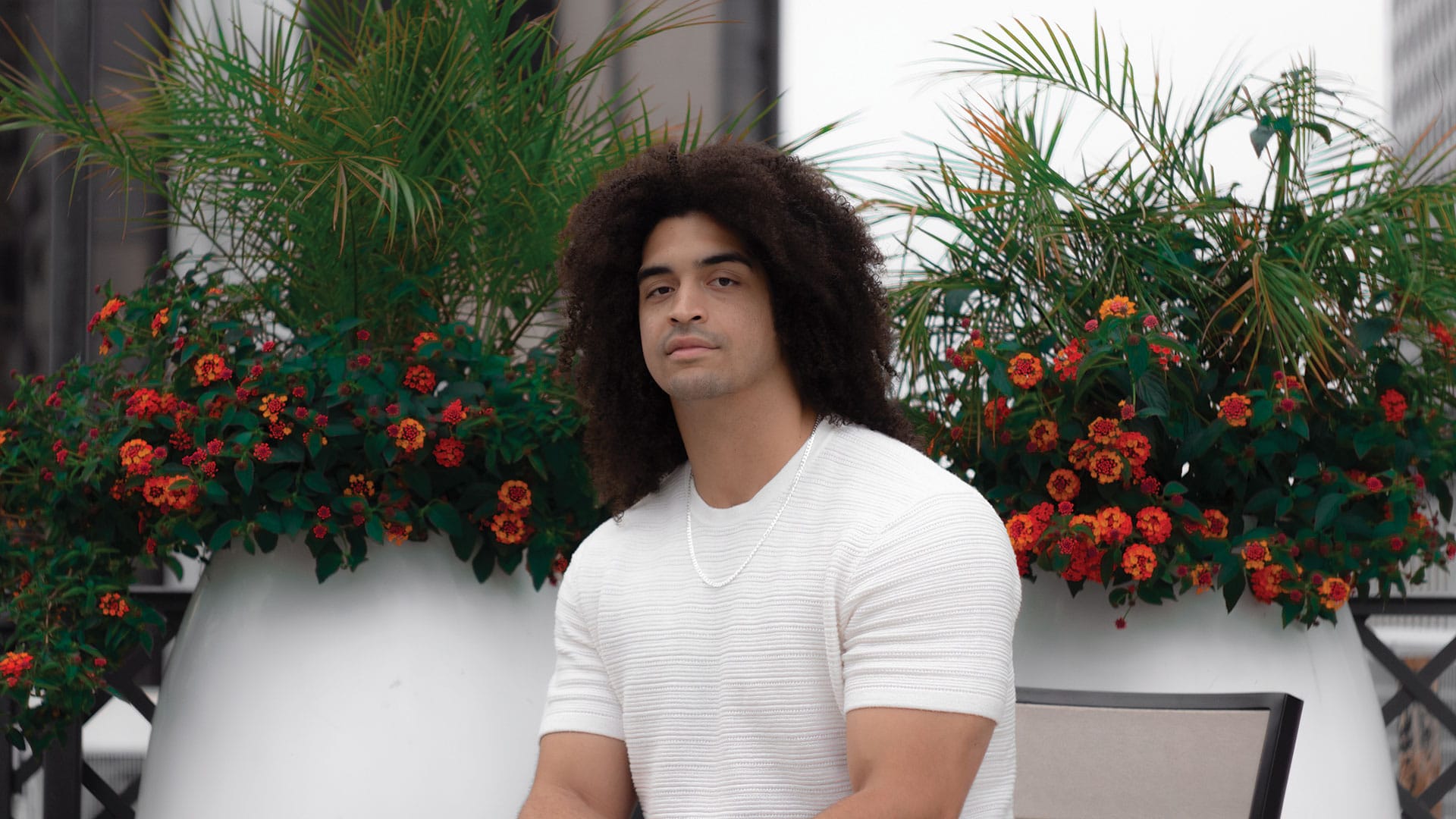
Wrestling Strange Beasts
Composer Xavier Muzik • by Benjamin Pesetsky
The world of composition often attracts a certain kind of person fascinated by the expressive possibilities of music but impatient with the daily grind of practicing an instrument. Though nearly all composers have some background playing an instrument, it’s a fundamentally different kind of creativity—creating a piece from the blank page, versus interpreting and performing something that already exists. Xavier Muzik, winner of the 2023 Michael Morgan Prize from the Emerging Black Composers Project, played tuba in his Albuquerque middle school in the late 2000s while teaching himself piano. But more than just performing, he was interested in the big picture: “I was really curious about the music we were playing, how it was structured, what made the moments I felt super excited about click in mind.” These are important questions for any musician, but only a composer takes the next step—“I wanted to deeply explore that and recreate those moments.”
Muzik, 29, went on to study at the California Institute of the Arts in Santa Clarita and at the Mannes School of Music in New York. As an undergraduate in 2016, he wrote a string quartet that was premiered by the Formalist Quartet in one of his first public performances. “I remember it being terrifying,” he said. “I was shaking the entire time, but looking back on it in hindsight, I feel good about what it was.”
Premieres can be nerve-wracking for any composer—sitting in a darkened hall, shoulder-to-shoulder with an audience taking in something you created. But anxiety has been an especially prominent part of Muzik’s life, something he addresses head-on in his San Francisco Symphony commission, Strange Beasts.
Like many people, Muzik experienced increasing anxiety during the COVID-19 pandemic, stuck at home and worried about staying healthy. Even after lockdowns lifted, it felt harder to go outside and socialize than before. He turned to street photography as almost a kind of therapy, the camera luring him back outside in-and-around his Los Angeles neighborhood. Some of his photos inspired his new piece, which SF Symphony Music Director Esa-Pekka Salonen will conduct in its premiere this month.

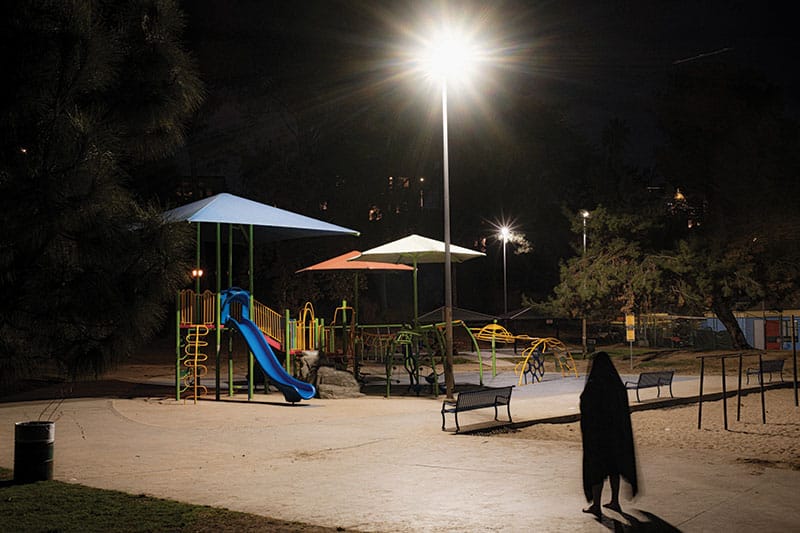
As for the title, Strange Beasts is a literal translation of kaiju, the Japanese term for the giant-monster genre epitomized by Godzilla. Muzik imagined such monsters as manifestations of his anxiety and catastrophic thinking, something “to both fear and be in awe of while I was out walking,” he said. “I wrote into the music a sense of uncanniness—a sense of fantasy or wonder at the cross-section of existential dread and bliss.”
The Emerging Black Composers Project was launched in 2020 by the SF Symphony and the San Francisco Conservatory to spotlight early-career Black American composers. In addition to Muzik, the 10-year commitment has so far resulted in first-prize SF Symphony commissions from Trevor Weston and Jens Ibsen, with the latest winner, Tyler Taylor, scheduled for a premiere in the 2025–26 season.
Winners are also offered workshop opportunities to try out and revise their piece with the SFCM orchestra prior to its SF Symphony premiere across the street. Muzik brought a pile of sketches to a session at the conservatory last April, followed by a complete reading in September. SFCM Music Director Edwin Outwater led the workshop and commented: “Xavier’s music has great depth and drama and really digs into big orchestral sounds and gestures.”
In addition to composing, Muzik is politically active, having worked for Let America Vote (a campaign dedicated to ending voting suppression) as well as for Elizabeth Warren’s 2020 presidential campaign. He has also worked as a regular substitute teacher for the Los Angeles Unified School District and as a staffer for the American Composers Forum. Drawn to service, he takes after his parents: his mother was a teacher and his father was a firefighter, both in Albuquerque and the Los Angeles area.
Muzik also reflects on his ancestry within the context of being a musician. “Both my parents are biracial, so I have mixed racial heritage,” he said. “I’m trying to figure out what that means for my identity as an artist and a composer. What does it mean to be a Black composer? And what does it even mean to be a composer?” Opportunities like the Emerging Black Composers Project can be a path to answers. “If you give composers of color the room to express themselves how they want to express themselves, without feeling the weight of expectations or identity, it creates a place to be an authentic artist.”
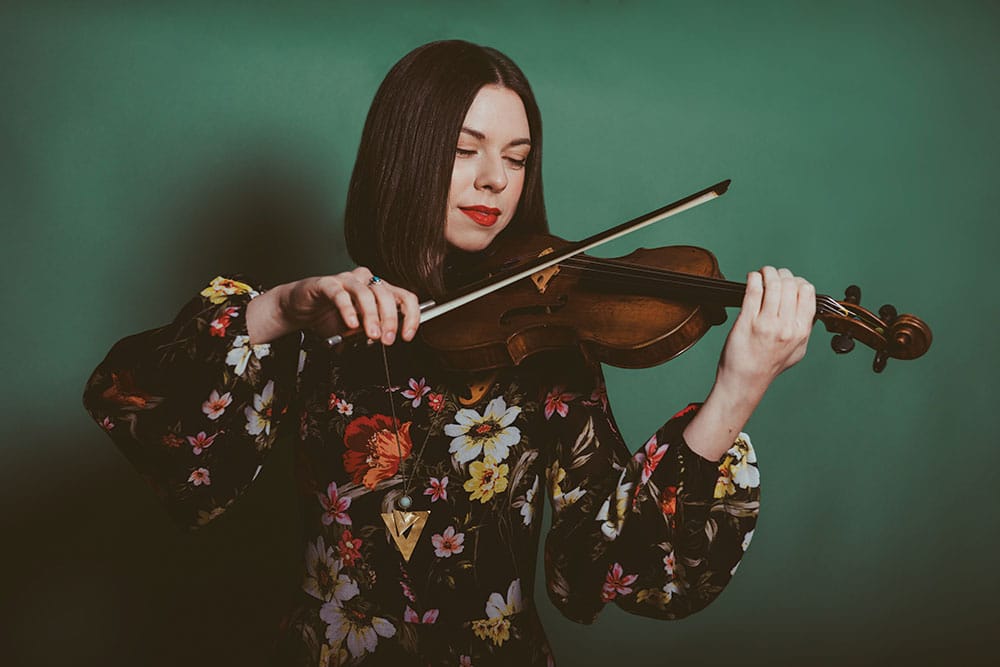
Four Questions For…
Violinist Tessa Lark
Tessa Lark is an in-demand classical violinist and a highly acclaimed fiddler, celebrated for her mastery of the rich musical traditions of her native Kentucky. In 2020 she was nominated for a Grammy in the Best Classical Instrumental Solo category for her performance of Michael Torke’s violin concerto, Sky, written for her. Lark’s most recent album, The Stradgrass Sessions, features an all-star roster of collaborators and composers including bassist Edgar Meyer, pianist Jon Batiste, mandolinist Sierra Hull, and fiddler Michael Cleveland.
Tell us a little about what you’re playing in your SF Symphony Spotlight Series recital on February 19.
It’s simply a program of music I love and music that Amy Yang and I love playing together—and it’s music I’d personally want to go hear performed, which is my main litmus test when I’m programming a show.
The real feature, I’d say, is John Corigliano’s Violin Sonata, which closes out the show, and is what fiddlers might call a “barn-burner.” I still can’t believe how much happens in every split second of that piece. It’s resplendent chaos, it’s suave, it’s heart-on-sleeve, it’s devastating, it’s incandescent…and it’s incredibly challenging to play. But it’s so rewarding, and an unbelievable live experience.
Amy and I have opened many a concert with Bartók’s Romanian Folk Dances, which is always a fun, folksy way to start off a performance.
I’ll have a little solo set when I’ll play Eugène Ysaÿe’s Sonata No. 4, a magical piece beloved by violinists that seems to transform the violin into a full orchestra at times. Ysaÿe dedicated that sonata to his friend, violinist Fritz Kreisler, so Amy and I will play a few of Kreisler’s charmingly sentimental tunes. I’ll also play a couple of pieces I wrote myself—my own sort of homage to Ysaÿe and Kreisler and their musical lives as both violinists and composers.
What inspired you to pursue a career in music? Were there any particular artists, teachers, or compositions that had a significant impact on your decision?
My parents say I explicitly declared myself a violinist when I was seven years old, but I can’t truly recall a life in music ever being a decision for me. I’m sure it’s eye-roll-y to hear a musician say they need music, that they can’t do anything else—but that’s honestly it for me. Like, we all need to drink water; I need to be involved in music.
Alison Krauss is one of the first sounds I remember falling in love with and relating to. Catherine McGlasson was my first teacher, and her violin tone was very dark and rich, which I’m sure subconsciously influenced my own tendencies. Edgar Meyer was and continues to be a huge influence.
You’re well-versed in both bluegrass and classical music traditions. How do you think your work in one sphere influences your work in the other?
The biggest thing it does, probably, is keep me humble and curious. There are endless ways to approach the violin and music in those two styles alone, so it keeps me searching for more ways to expand my interpretive toolbox. And with bluegrass music, the culture is to learn the music with others, by ear—and that inextricable link of human connection with the music is something I try to convey in my classical shows, too.
What are some of your interests outside of music and how do they influence your creativity and artistic expression?
It’s funny—I swear I’m not boring, but I always blank when I’m asked this question, I think because my brain is always buzzing with music and wild ideas, and that’s usually more than enough to entertain me! I love drawing, painting, pulling espresso and making mediocre latte art, soaking up nature, writing, puzzle games, deep conversations, comedy, bad puns… I just love trying to understand stuff, and any new understanding I come to inevitably seeps into the music I make.
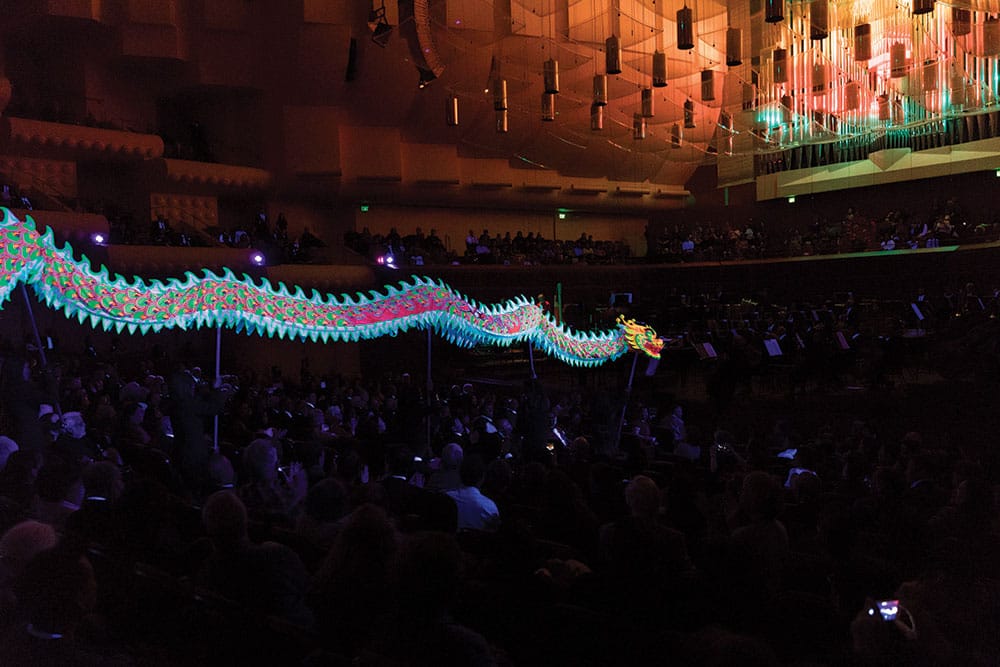
Celebrating 25 Years of Lunar New Year at the San Francisco Symphony
When the San Francisco Symphony first celebrated Lunar New Year with a concert in 2001, few could have predicted it would grow into a beloved annual tradition and an integral part of the Symphony’s programming. Equal parts fundraiser, cultural celebration, and artistic showcase, this event has flourished over the past 25 years. Here we look back at a quarter century of Lunar New Year at the San Francisco Symphony.
Note: Click an image to open the gallery as a slideshow, or scroll to see images with their captions
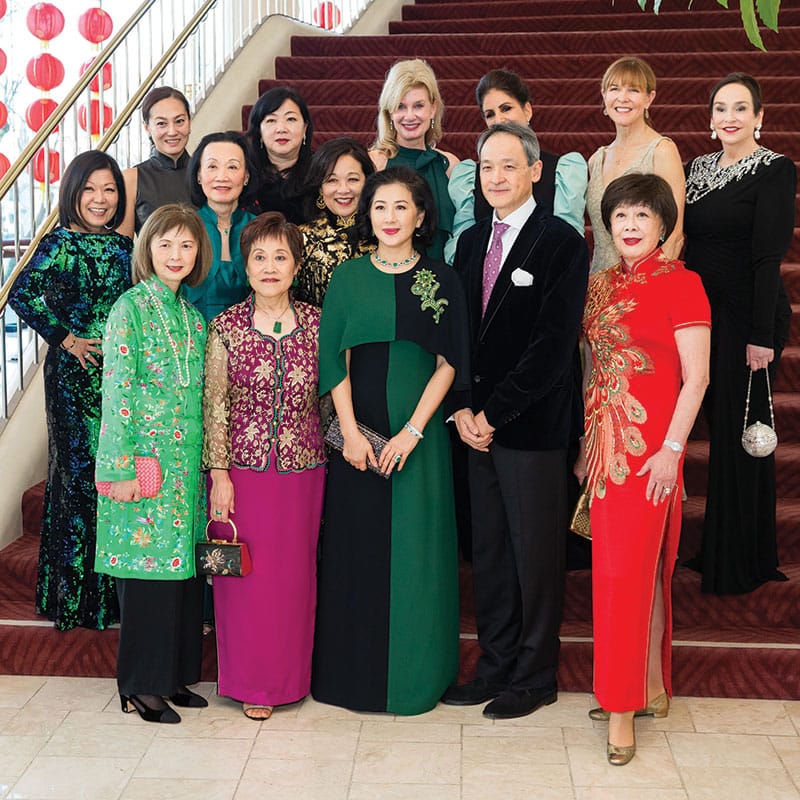
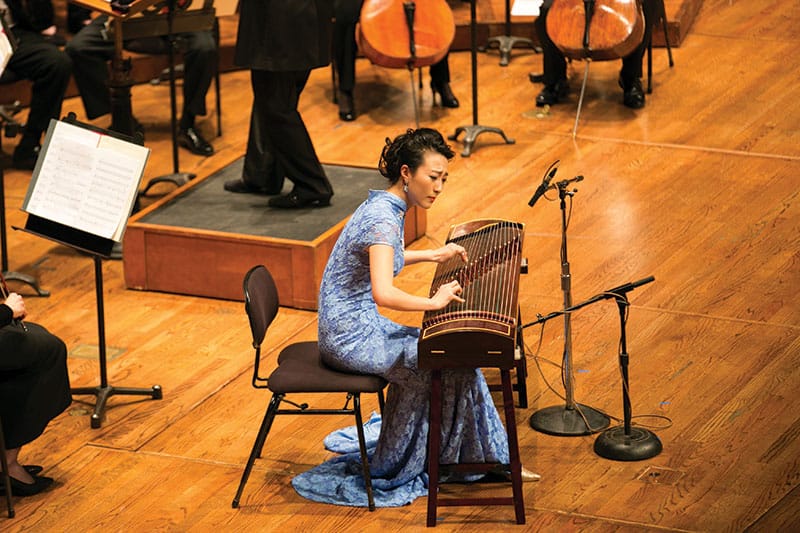
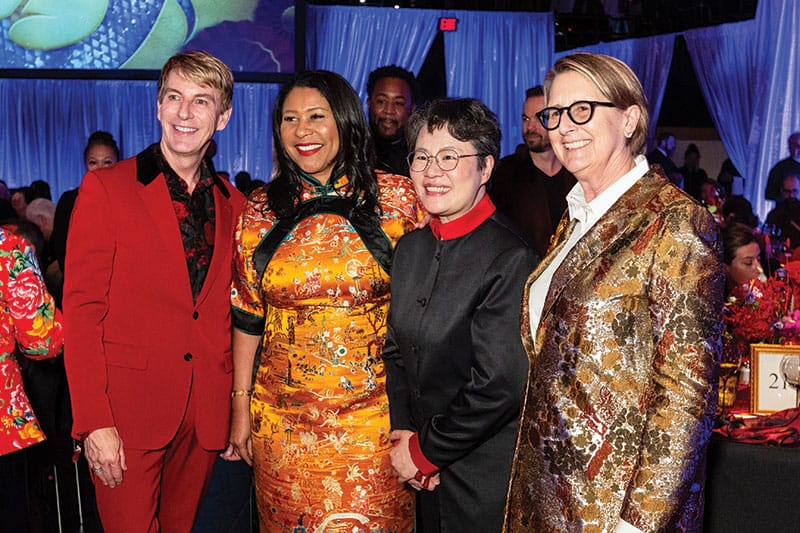
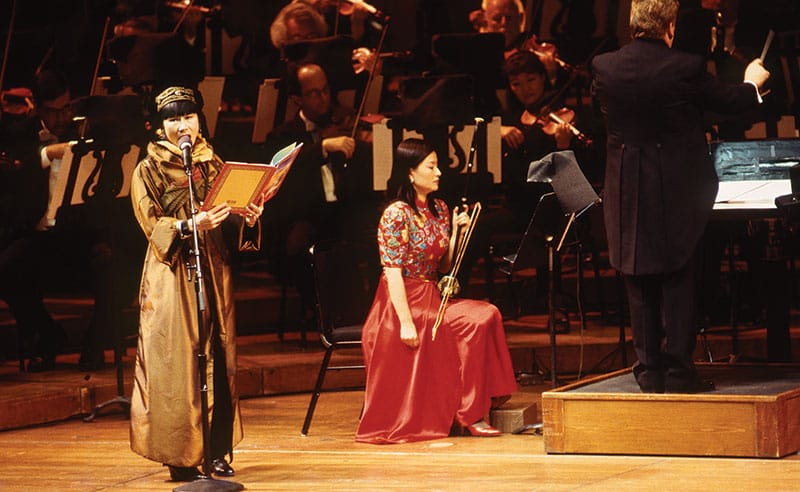
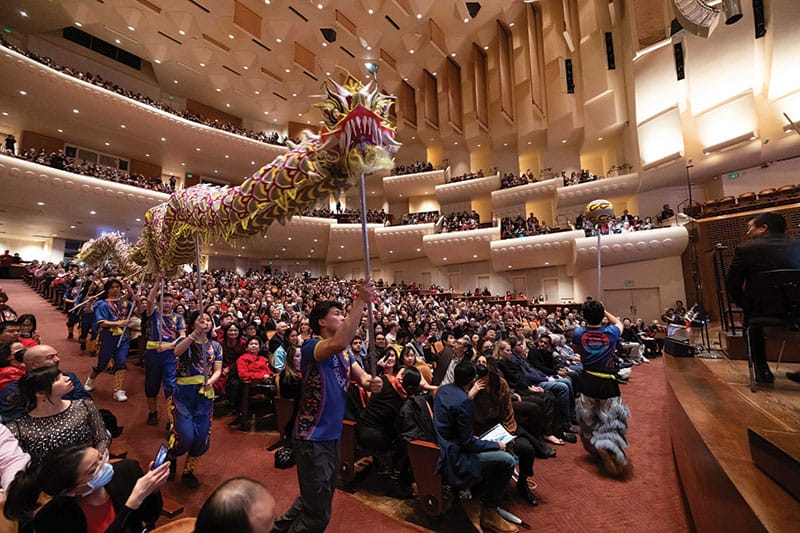
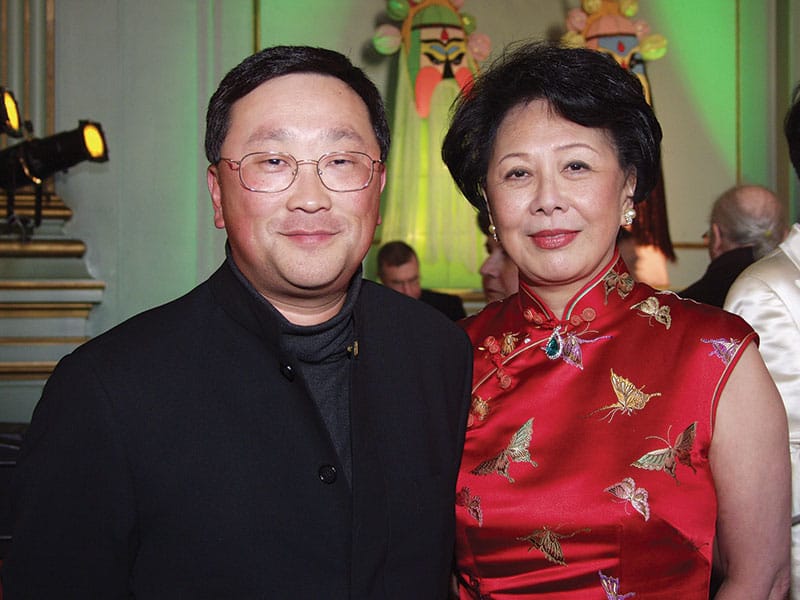
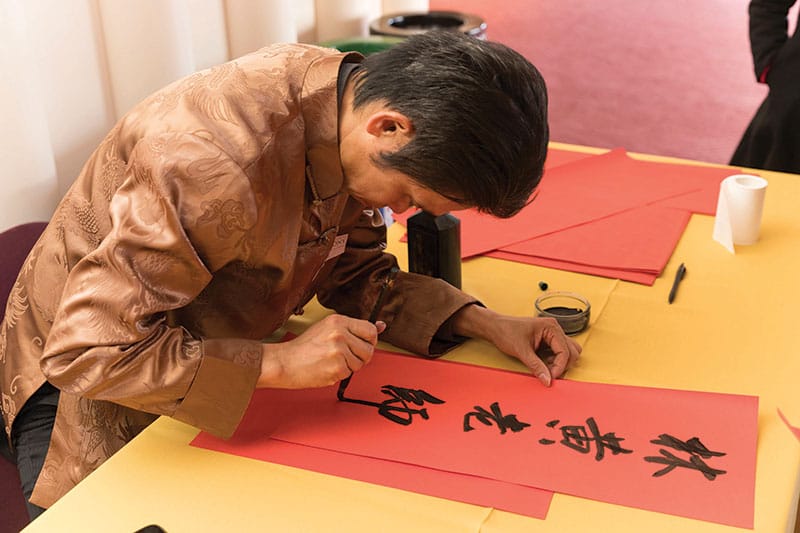
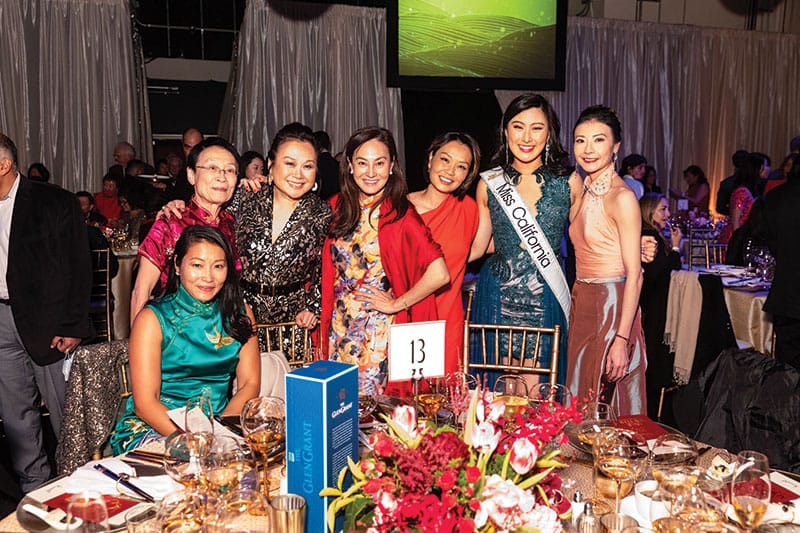
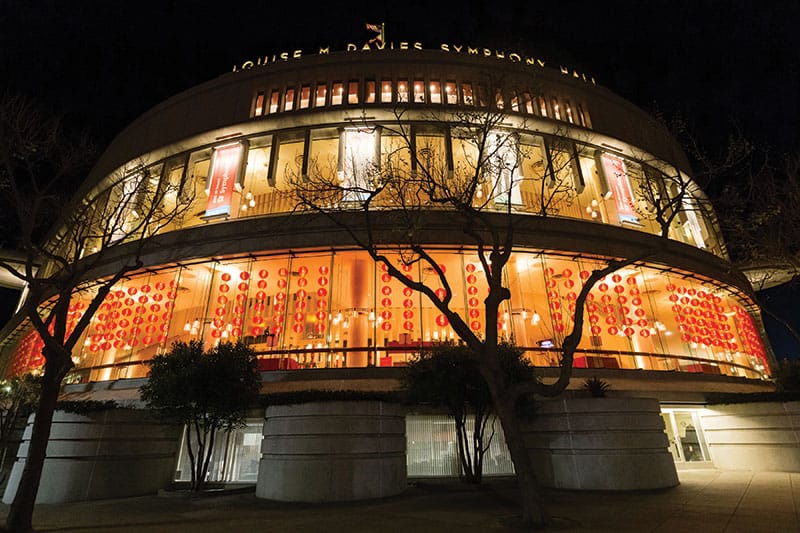
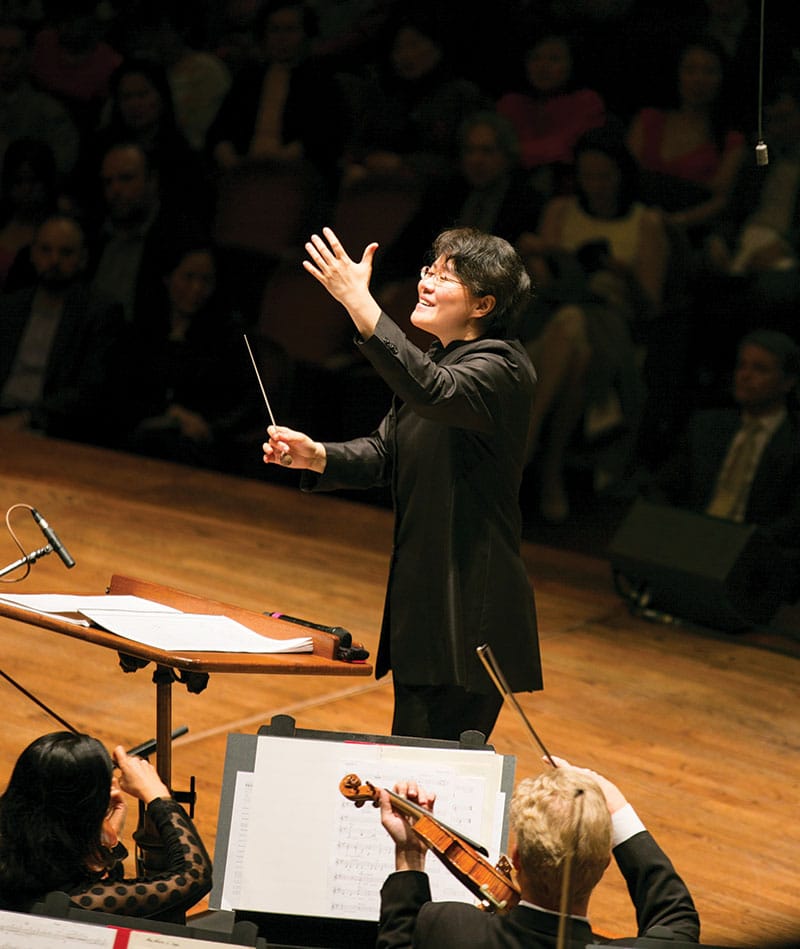
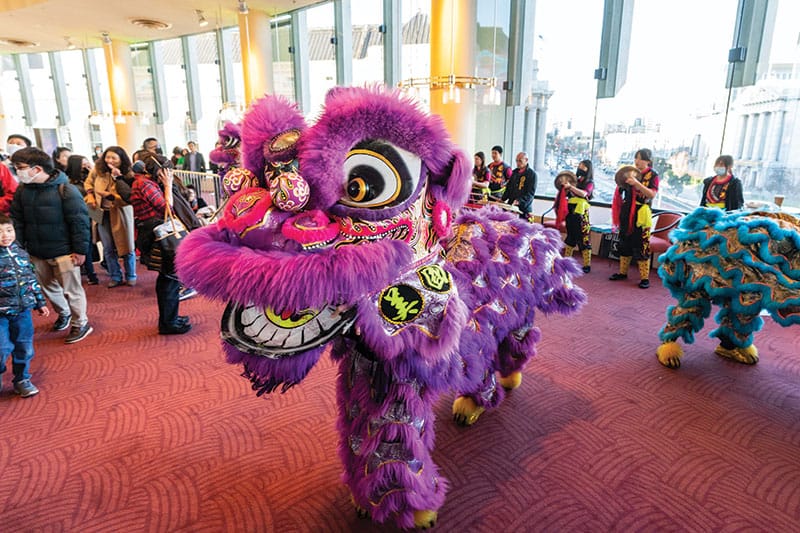
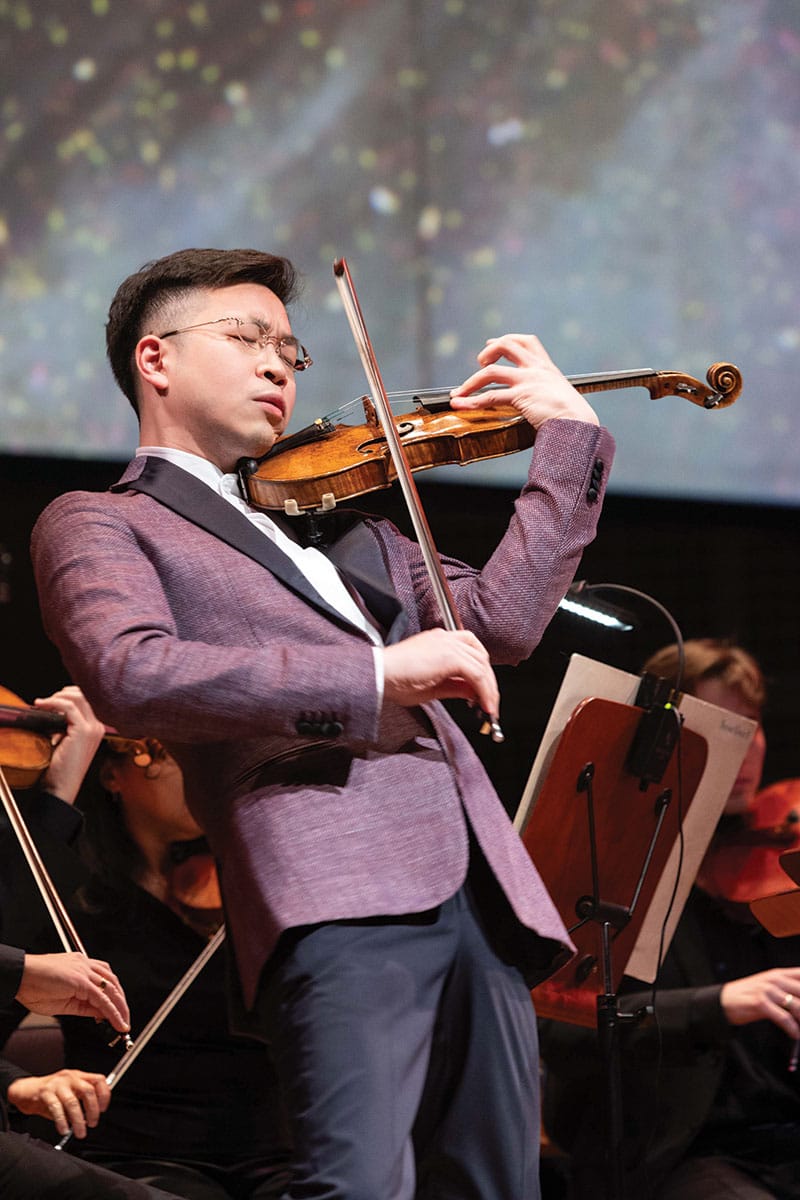
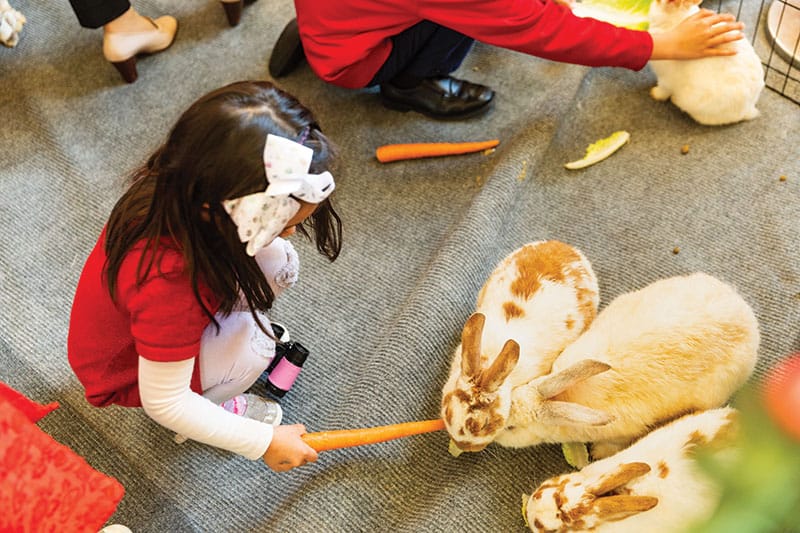
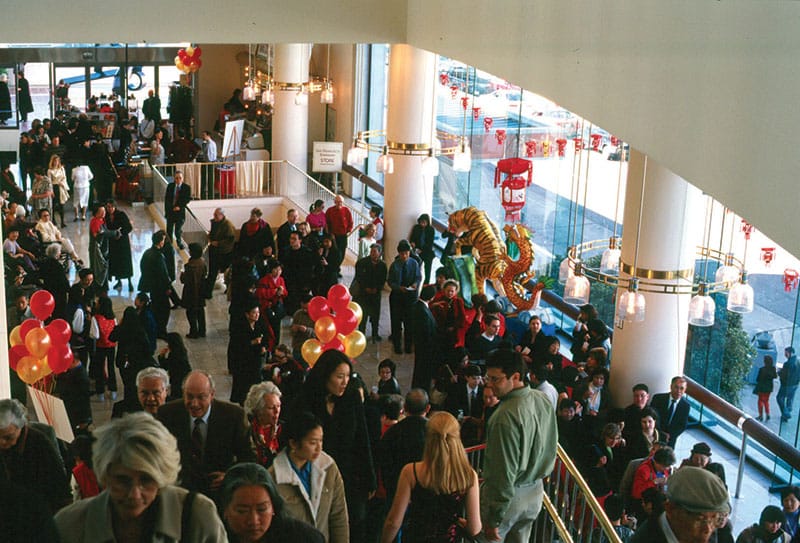
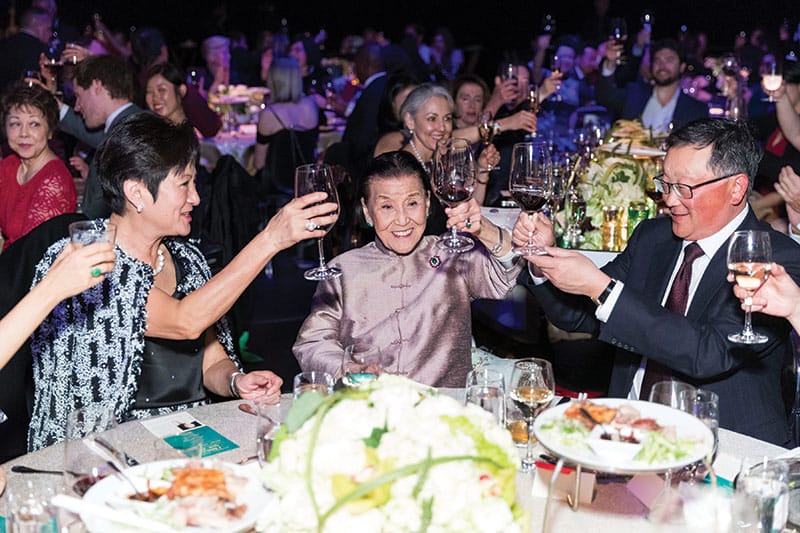
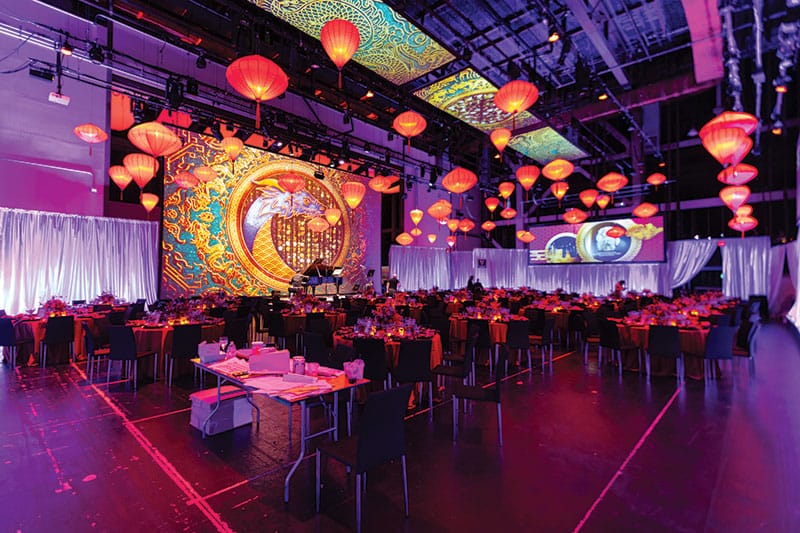
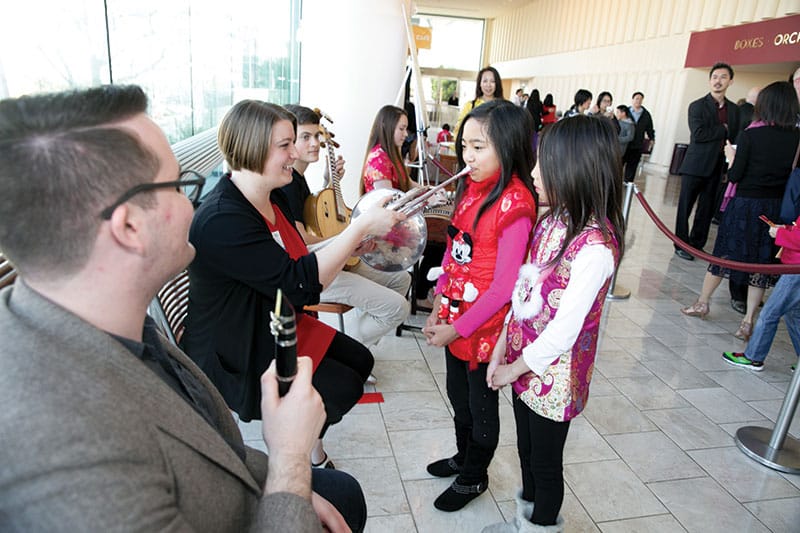
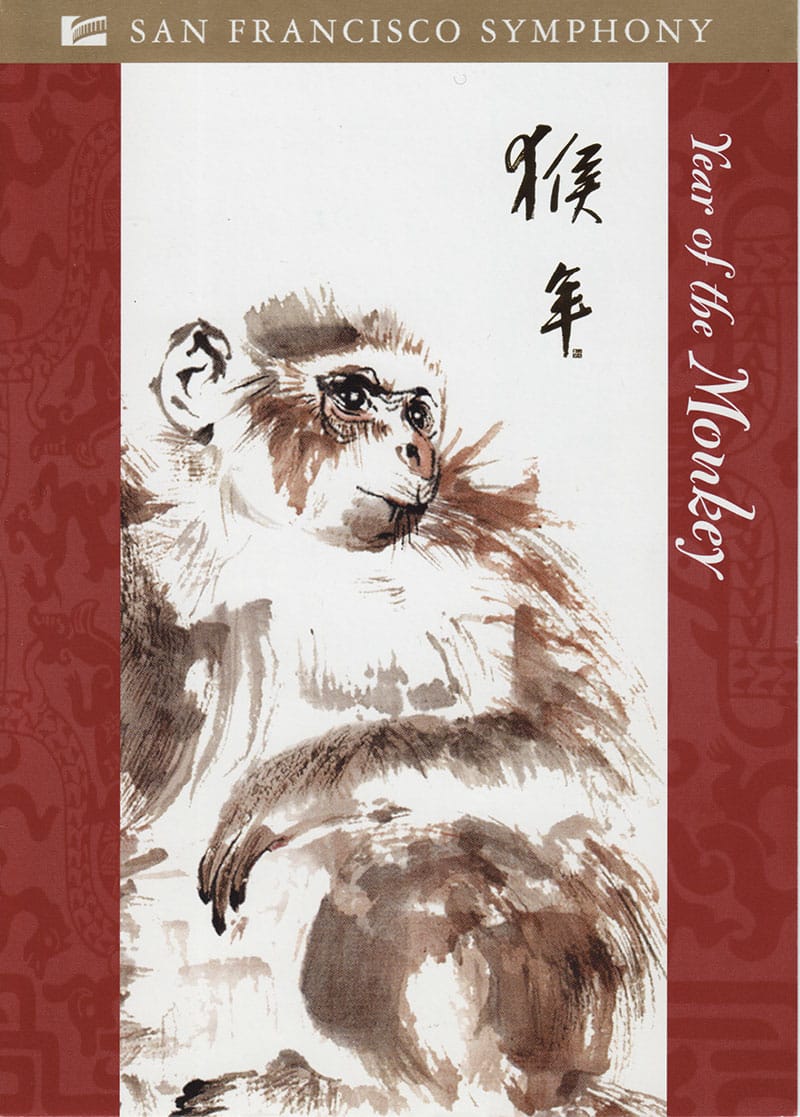
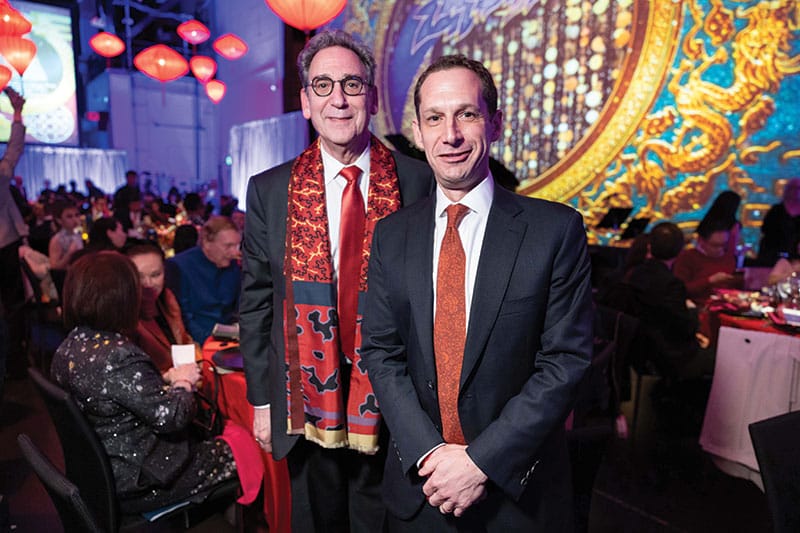
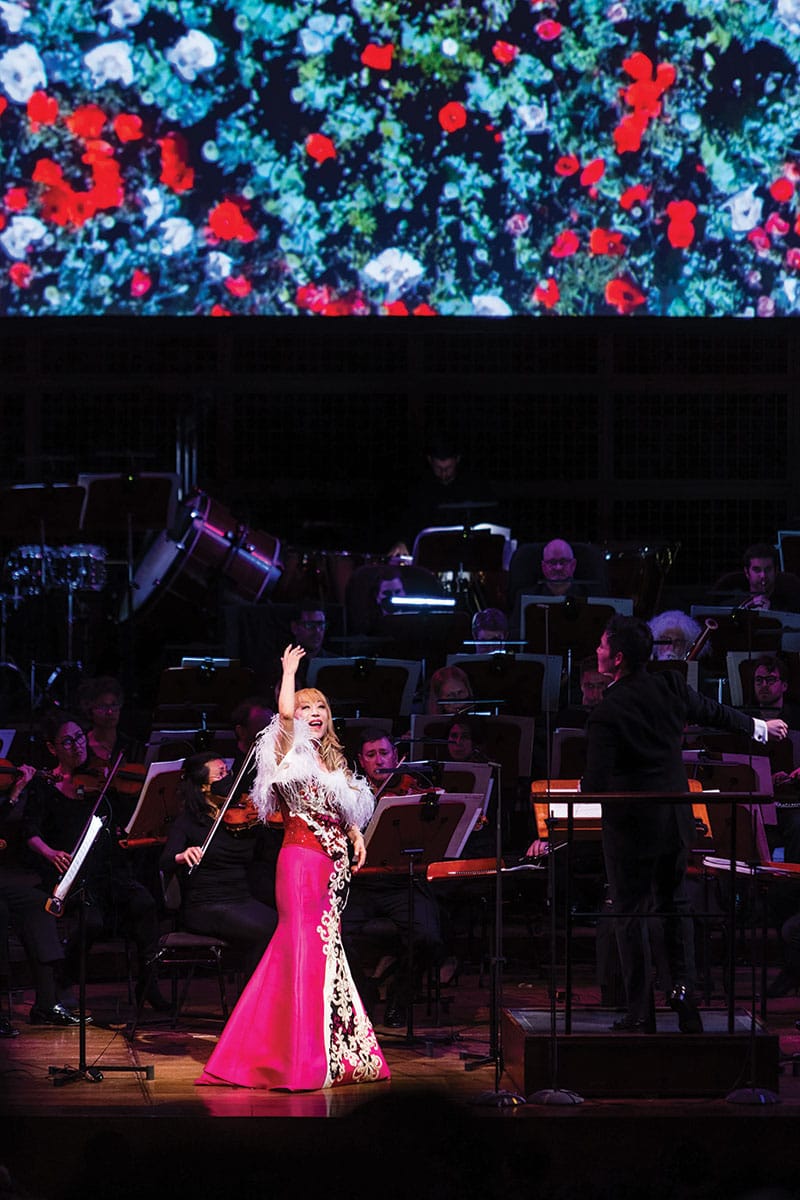
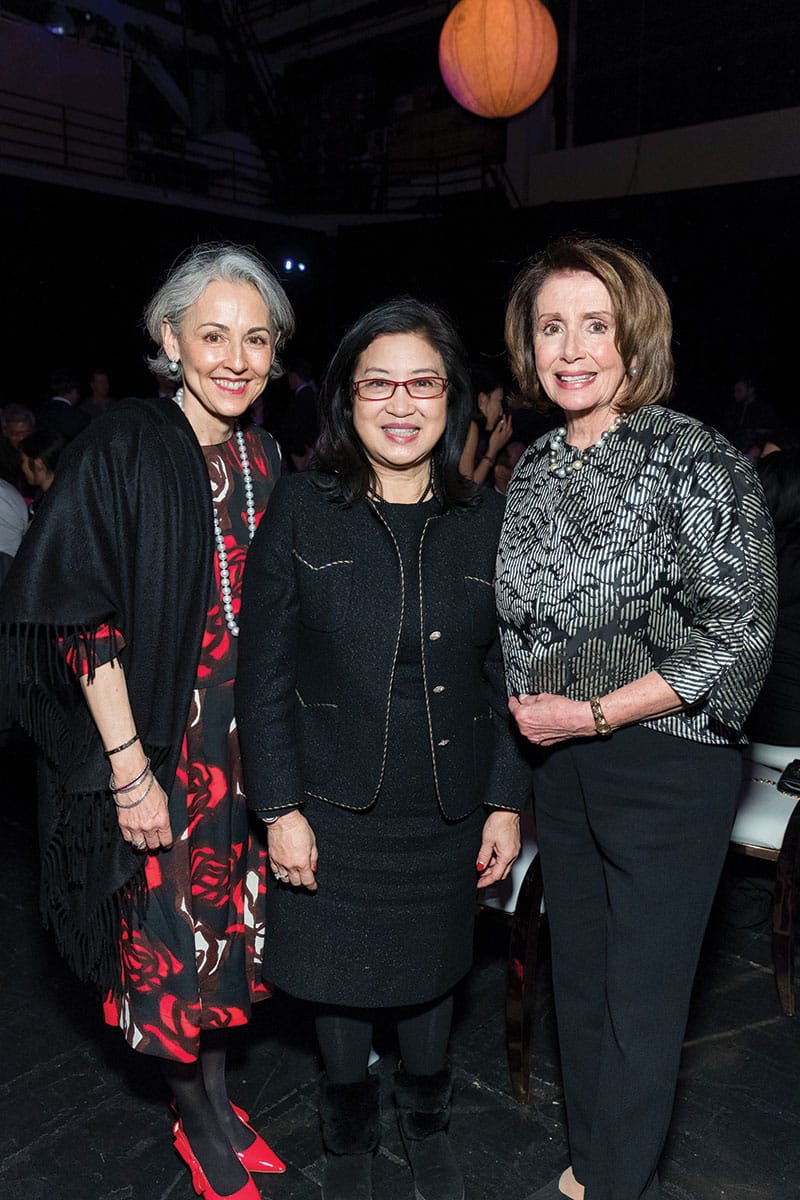
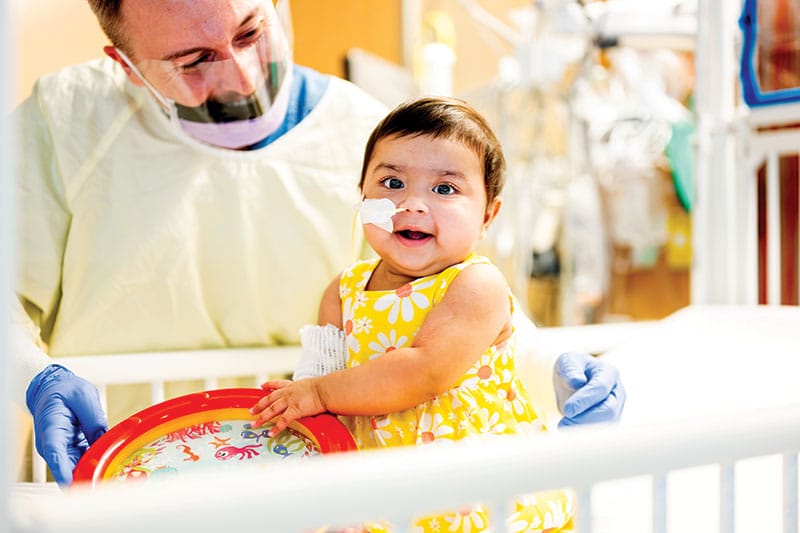
Community Connections
UCSF Benioff Children’s Hospitals
Research highlights the transformative impact of music therapy for hospitalized children, helping them heal faster, feel better, and return home from the hospital sooner. Music connects the mind, body, and spirit, offering a unique and effective approach to care. UCSF Benioff Children’s Hospitals were the first Bay Area pediatric facilities to embrace that research and establish music therapy programs for children.
The music therapists at UCSF Benioff Children’s Hospital San Francisco work closely with doctors, nurses, and other specialists to provide individual and group sessions to support children and their families through illness and injury. Music therapy draws on a child’s innate creativity to help manage pain, express emotions, and build resilience. Each session is carefully tailored to meet the child’s needs and may include singing, songwriting, musical improvisation, or therapeutic instrument play.
This comprehensive program promotes both physical healing and emotional well-being, making music therapy an essential part of pediatric healthcare.
To support and learn more about the music therapy program at UCSF Benioff Children’s Hospital San Francisco, visit bchcreativearts.org/blog.
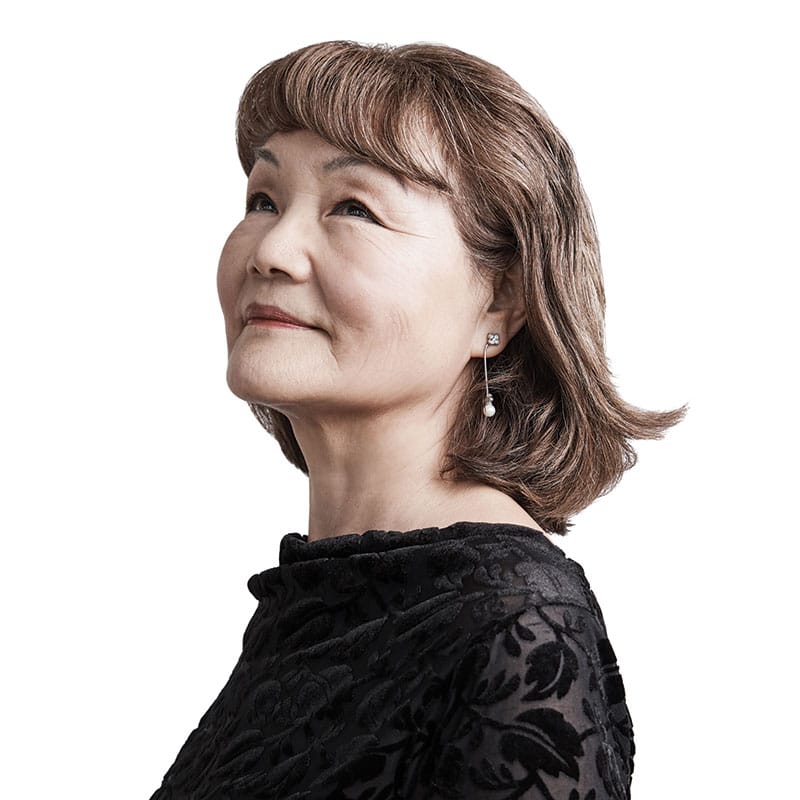
Meet the Musicians
Kum Mo Kim • Violin
Kum Mo Kim joined the San Francisco Symphony second violin section in 1975 under Seiji Ozawa.
How did you begin playing violin?
My father was a violinist who founded the Seoul Philharmonic, and my mother was a pianist, so music was in my family. My mother started me on piano when I was five, but then saw I have a crooked pinky finger, so she thought the violin was a better choice for me. I switched to violin when I was seven, and to this day I’m so grateful because I just love its sound. There’s nothing else that can go right to your heart.
What were your next steps in becoming a professional musician?
I came to America in 1963 when I was invited to the Ventnor Music Festival in Atlantic City, New Jersey. I was 16 and not very experienced with orchestral playing, but they actually put me in the concertmaster seat doing Shostakovich’s Fifth Symphony. After finishing high school, I went to the University of Michigan, where my sister also attended. I finished my bachelor’s degree in three years and then went to Juilliard for a master’s, where I studied with Ivan Galamian. After Juilliard, I was planning to go to Yale for a doctorate, but I happened to visit Washington, DC, in April and fell in love with the city and its cherry blossoms. It turned out the National Symphony had an audition that weekend, so I tried out and won it. I played in the opening concert of the Kennedy Center in 1971 and stayed for four years. I joined the San Francisco Symphony in June 1975.
Do you have a concert day routine?
I have an early dinner because our call time is 7:30pm. I arrive about 45 minutes early to warm up, have some tea, and get ready. As a violinist, you have to take care of your neck and back, so I stretch with a roller in the locker room.
Can you tell us about your instrument and bow?
I have an old Italian violin which I’ve used for almost 40 years. The maker is unknown (thought to be Varotti) so it was not as expensive, but I love the sound. I will donate it to the Symphony when I retire because I want it to carry on to the next young person who needs a good violin. I use an old French bow by Voirin. It makes a beautiful sound and is light and versatile.
What do you like to do outside the Orchestra?
I absolutely love ballroom dancing because it’s good exercise, you move to the music, and you meet good people. I go every week, sometimes two or three times, and I’ve been doing that for almost 40 years.
What do you love about the San Francisco Symphony?
Everybody in the Symphony is a top player. It’s really inspiring to be able to make great music with all these talented people. We also have so many talented young soloists and great conductors coming with different ideas and stories to inspire you. I feel so blessed to have made music for 50 years doing what I love.
Print Edition
